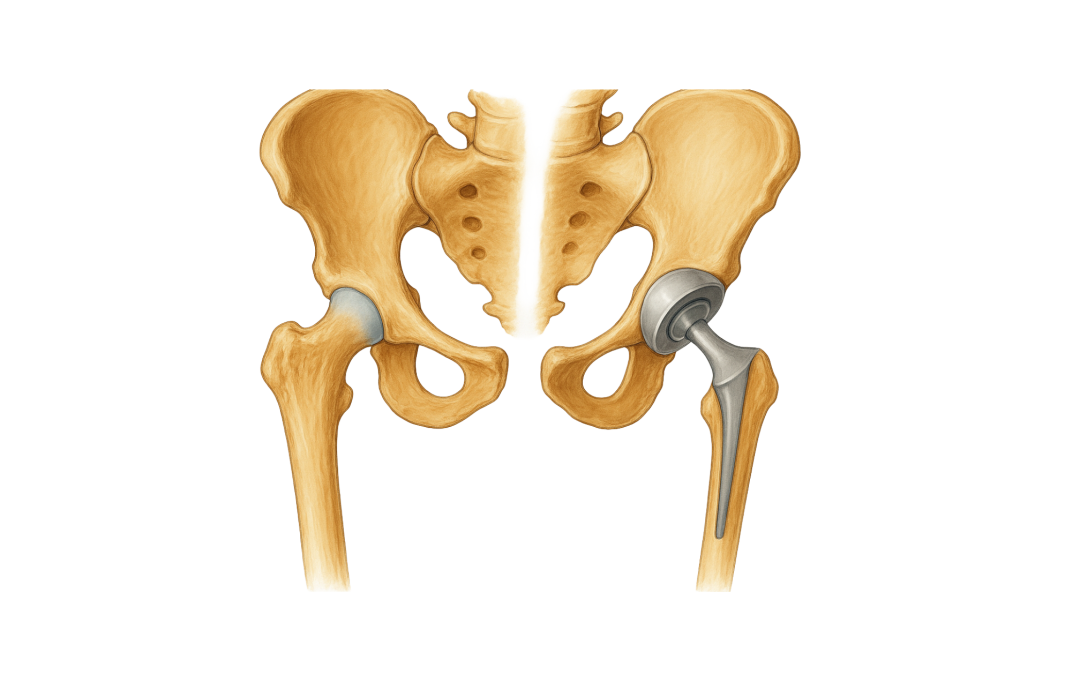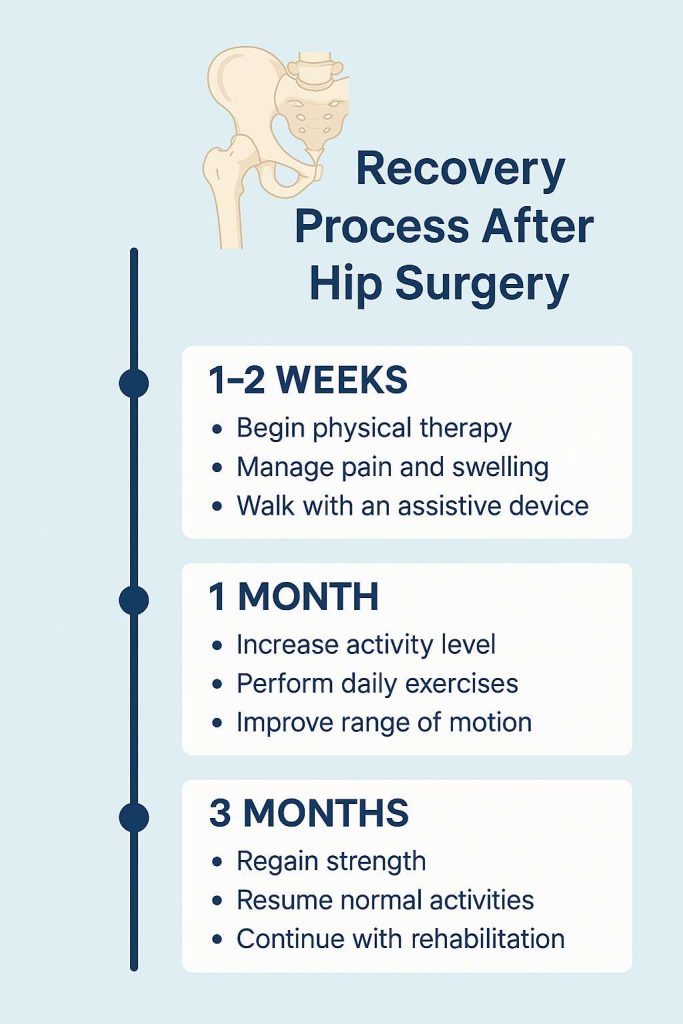Your recovery guide following hip replacement surgery
Recovering from hip replacement surgery is a gradual but positive journey. Most patients notice a significant improvement in pain and movement within a few weeks. Here’s what you can expect after your operation
Getting up and moving early
You’ll usually be encouraged to stand and take a few steps on the day of surgery. Early movement helps with circulation, speeds up recovery, and reduces the risk of complications such as blood clots.
Using crutches or a walking Aid
You’ll need support to walk safely at first — typically with crutches or a walking frame. Most people move to a stick or walk unaided by 4 to 6 weeks, depending on confidence, balance, and strength.
Managing pain and swelling
Some discomfort and swelling is normal in the early days. You’ll be given pain relief to help you stay comfortable and mobile. Elevating your leg, using ice packs, and doing your exercises regularly will help manage swelling and speed up healing.
Wound care
Your wound will be covered with a dressing that should remain in place and unchanged until the wound is fully healed — usually around 12 to 14 days.The wound will be checked either by your GP practice nurse or in a hospital clinic, depending on where you had your surgery. If you have sutures or clips, these are usually removed around the two-week mark. A small amount of spotting on the dressing is normal. However, if you notice increasing redness, discharge, or swelling — or if you’re concerned — please get in touch.
Hip precautions
In the early stages of healing, it’s important to avoid movements that might stress the new joint. The goal is to protect the hip while soft tissues heal and help you build good habits for long-term joint stability.
- Avoid bending the hip beyond 90 degrees — don’t lean too far forward when sitting or getting dressed
- Don’t sit on low or soft chairs or sofas where you sink down — use firm, higher seating
- Position your knees slightly wider than your feet when standing up — this makes it easier and safer to get up from a chair
- You may sleep on your side, but place a thin pillow between your knees for support
- Avoid twisting your hip or turning your foot inward, especially when standing or turning
While the first 6 weeks after surgery are crucial for healing, adopting these safe habits early on helps protect your hip in the long run and supports lasting stability.
Physiotherapy and exercises
You’ll be given a set of simple exercises to do at home. These help strengthen the hip, improve movement, and speed up recovery. some patients need more physiotherapy input than others.
Returning to normal activities
Most of my patients return to everyday tasks like walking around the house, making meals, or light chores within 4 to 6 weeks. I’ll advise you when it’s safe to drive, return to work, or resume physical hobbies. Full recovery can take a few months, but the improvement in quality of life is often significant.
Follow-up and support
You’ll have a follow-up appointment to check your progress and answer any questions. If you have any concerns before then, please get in touch. Your recovery is important, and I’m here to help you every step of the way.
Ready to take the next step?
Book a consultation to find out if hip replacement surgery is right for you.


